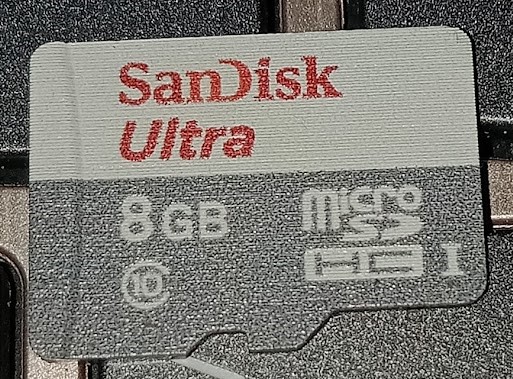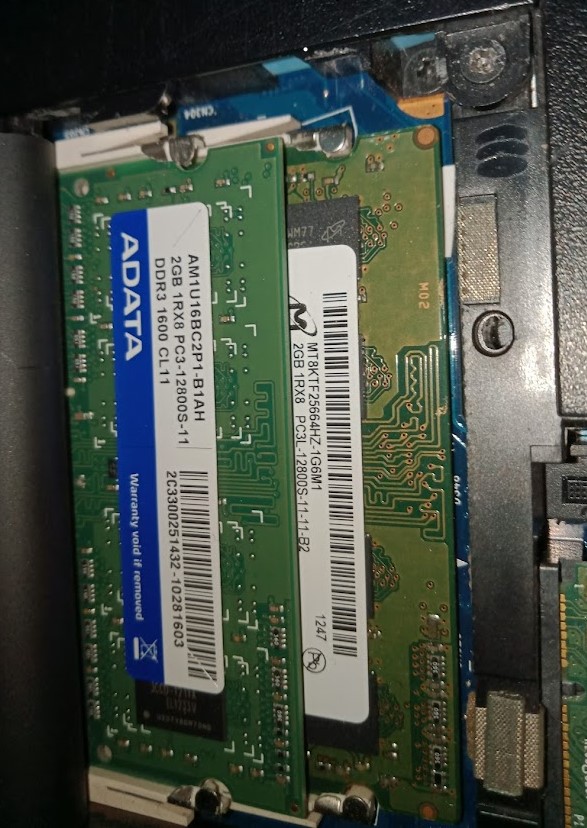Comparing: SanDisk Ultra MicroSDHC 8GB vs DDR3 SODIMM 1066MHz [Disk]
In this comparison, we analyze two Disks: SanDisk Ultra MicroSDHC 8GB and DDR3 SODIMM 1066MHz [Disk], using synthetic benchmark tests to evaluate their overall performance. This side-by-side comparison helps users understand which hardware delivers better value, speed, and efficiency based on standardized testing. Whether you're building a new system or upgrading an existing one, this benchmark-driven evaluation offers valuable insights to guide your decision.

SanDisk Ultra MicroSDHC 8GB
| Type: | Disks |
|---|---|
| Model: | Ultra MicroSDHC 8GB |
| Capacity: | 8GB |
| Interface: | UHS-I |

DDR3 SODIMM 1066MHz [Disk]
| Type: | Disks |
|---|---|
| Model: | DDR3 SODIMM 1066MHz [Disk] |
| Capacity: | 2GB |
| Interface: | DDR3 |
Specification Comparison Table
| Specification | SanDisk Ultra MicroSDHC 8GB | DDR3 SODIMM 1066MHz [Disk] |
|---|---|---|
| Brand | SanDisk | - |
| Format | MicroSDHC | RAM Disk |
| Capacity | 8GB | 2GB |
| Interface | UHS-I | DDR3 |
Submission Comparison Table
| Benchmark Software | SanDisk Ultra MicroSDHC 8GB | DDR3 SODIMM 1066MHz [Disk] |
|---|---|---|
| ATTO Disk Benchmark - 64M |
Read: 44.83 MB/s Write: 5.64 MB/s |
Read: 1020.00 MB/s Write: 1080.00 MB/s |
| Cross Platform Disk Test |
Read: 44.50 MB/s Write: 4.72 MB/s |
Read: 658.01 MB/s Write: 265.28 MB/s |
| CrystalDiskMark |
Read: 46.70 MB/s Write: 11.73 MB/s |
Read: 746.24 MB/s Write: 828.18 MB/s |
About Hardware SanDisk Ultra MicroSDHC 8GB
The SanDisk Ultra MicroSDHC 8GB is an 8GB capacity memory card with Class 10 UHS-I speed, which provides sufficient performance for everyday use such as photo and video storage on mobile phones or digital cameras.
With a read speed of up to 80MB/s, it can handle HD video playback as well as light applications. However, the 8GB capacity may already feel limited for current use.
Sunday, 26 April 2015 21:35:59 | Update: 1 month ago
About Hardware DDR3 SODIMM 1066MHz [Disk]
DDR3 SODIMM 1066MHz is a DDR3 SODIMM RAM module with a speed of 1066MHz, typically used in laptops or other compact devices. In a standard system, this RAM serves as the main memory for running applications and the operating system.
However, in specialized use, this RAM is configured as a RAMDisk, which is a temporary storage that utilizes RAM capacity to significantly increase data access speed compared to SSDs or HDDs. This use of RAMDisk allows for temporary storage of temporary files, application caching, or data processing with very low latency. In this experiment, RAMDisks are used to store data and test read and write speeds.
Wednesday, 26 December 2012 14:27:32 | Update: 1 month ago
